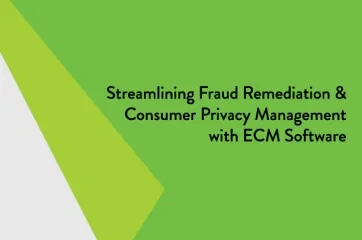Bank loan tickler tracking is a process that enables the timely follow-up of items that must be tracked throughout the life of both consumer and commercial loans. This includes anything that requires periodic updating or validating to maintain compliance and a well-managed portfolio.
What Should Be Tracked?
Banks and credit unions engage in loan tickler tracking to stay on top of items that require attention to mitigate risk and to stay in compliance with state and/or federal banking regulations. Such items include:
Initial loan file documents: Bank and credit union staff must ensure each loan file is complete and follow up on any missing documents, such as a deed of trust or title policy.
- Compliance measures: Loan tickler tracking is also used to track compliance-related initiatives. For example, real estate loans require a yearly assessment of escrow overages and shortages.
- Covenant agreement adherence: Banks and credit unions also monitor customer or member adherence to commercial loan terms. For example, let’s assume an original loan agreement stated that the loan amount must not exceed 80 percent of the borrower’s eligible receivables. Therefore, bank and credit union staff will need to receive, inspect, and record quarterly receivables reports from the account holder.
- UCC financing statements: Banks and credit unions must renew UCC filings every five years. Failing to file within a 180-day period prior to expiration creates serious issues for the institution, which is why proper tracking is vital.
- Insurance: Financial institutions also monitor customer and member insurance coverage. Without insurance on a car or home, for example, a bank or credit union has no means of recouping its loan amount if an account holder would have an auto accident or house fire.
What Systems Are Used for Bank Loan Tickler Tracking?
Financial institutions rely on a wide array of tracking methods. This can range from a simple spreadsheet or database to an application created in-house. These systems typically rely on manual data entry by staff. Introducing the human aspect also increases the risk for error.
Some financial institutions use features in their core system, while others use a generic tickler application retrofitted for banking use. Still other banks and credit unions use an all-in-one imaging and tracking system, like AccuAccount, which integrates to the core and automates the creation and reporting of exceptions.
Tracking Resources
For more information about bank tracking and management, be sure to check out our extensive resource library with free spreadsheets, whitepapers, and eBooks.
Searching for more banking definitions? Check out our banking definitions page.














